PRTF Reports Submitted to the EPA:
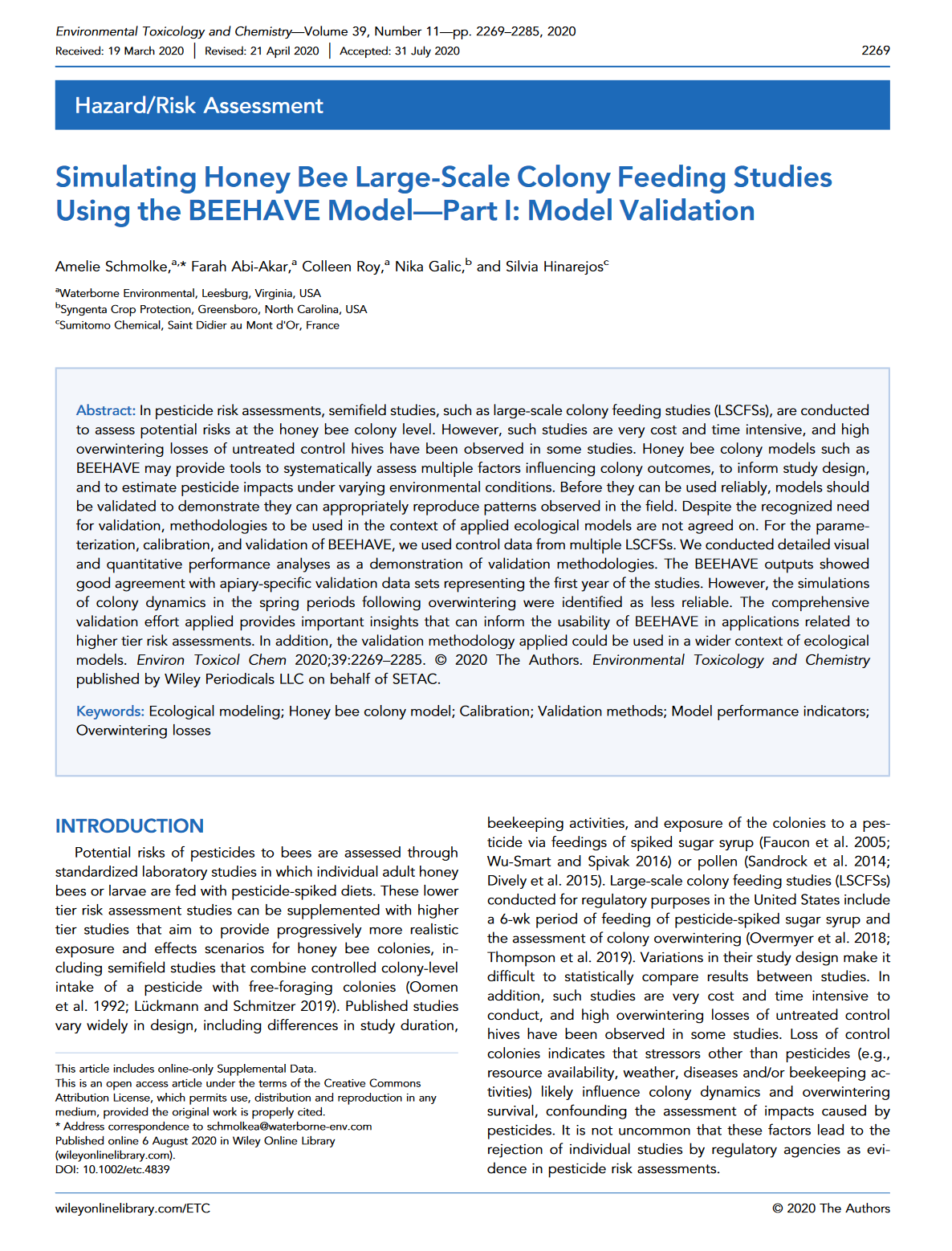
Simulating Honey Bee Large‐Scale Colony Feeding StudiesUsing the BEEHAVE Model- Part I: Model Validation
In: Environmental Toxicology and Chemistry, vol. 39, pp. 2269–2285, 2020
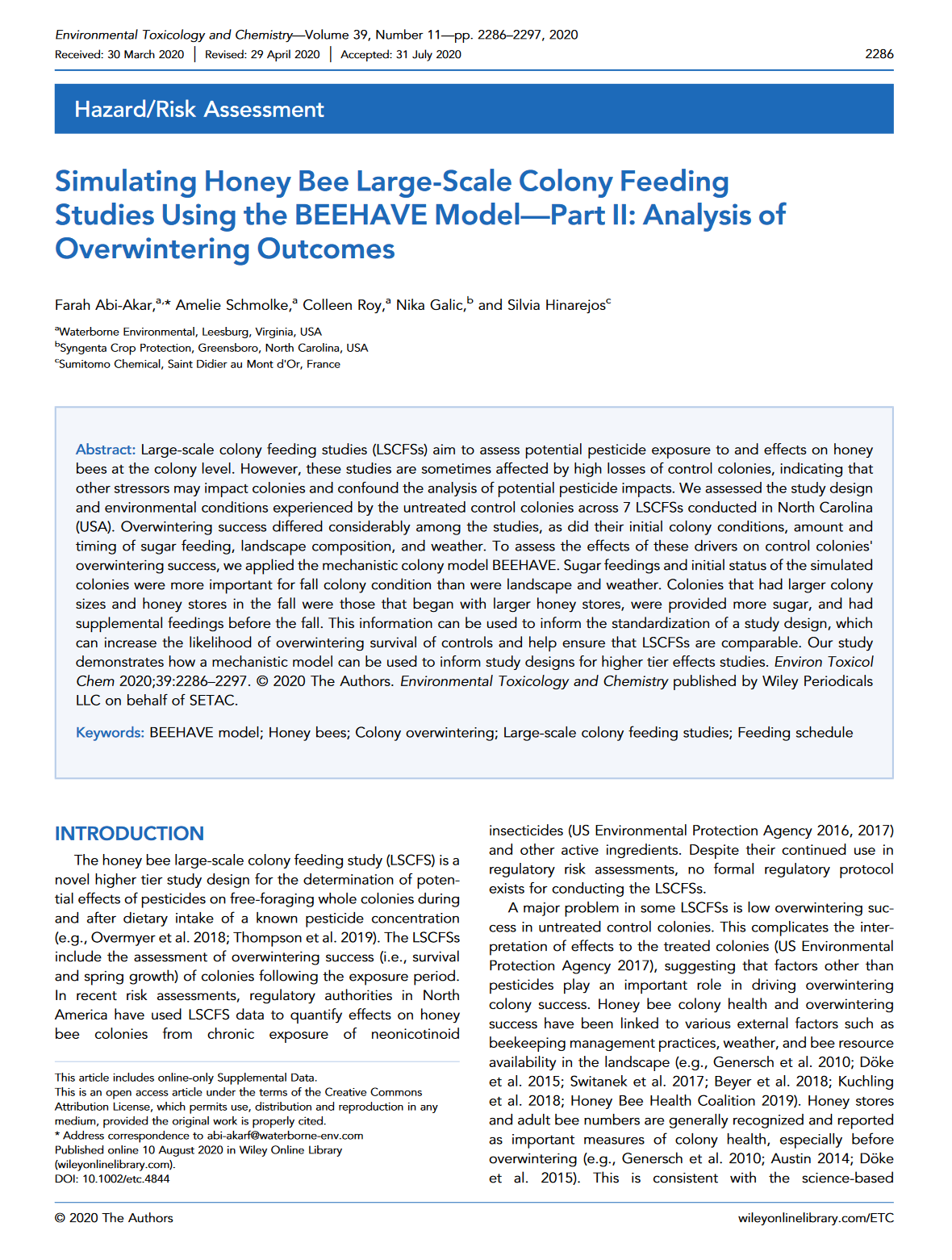
Simulating Honey Bee Large‐Scale Colony Feeding Studies Using the BEEHAVE Model-Part II: Analysis of Overwintering Outcomes
In: Environmental Toxicology and Chemistry, vol. 39, pp. 2286-2297, 2020
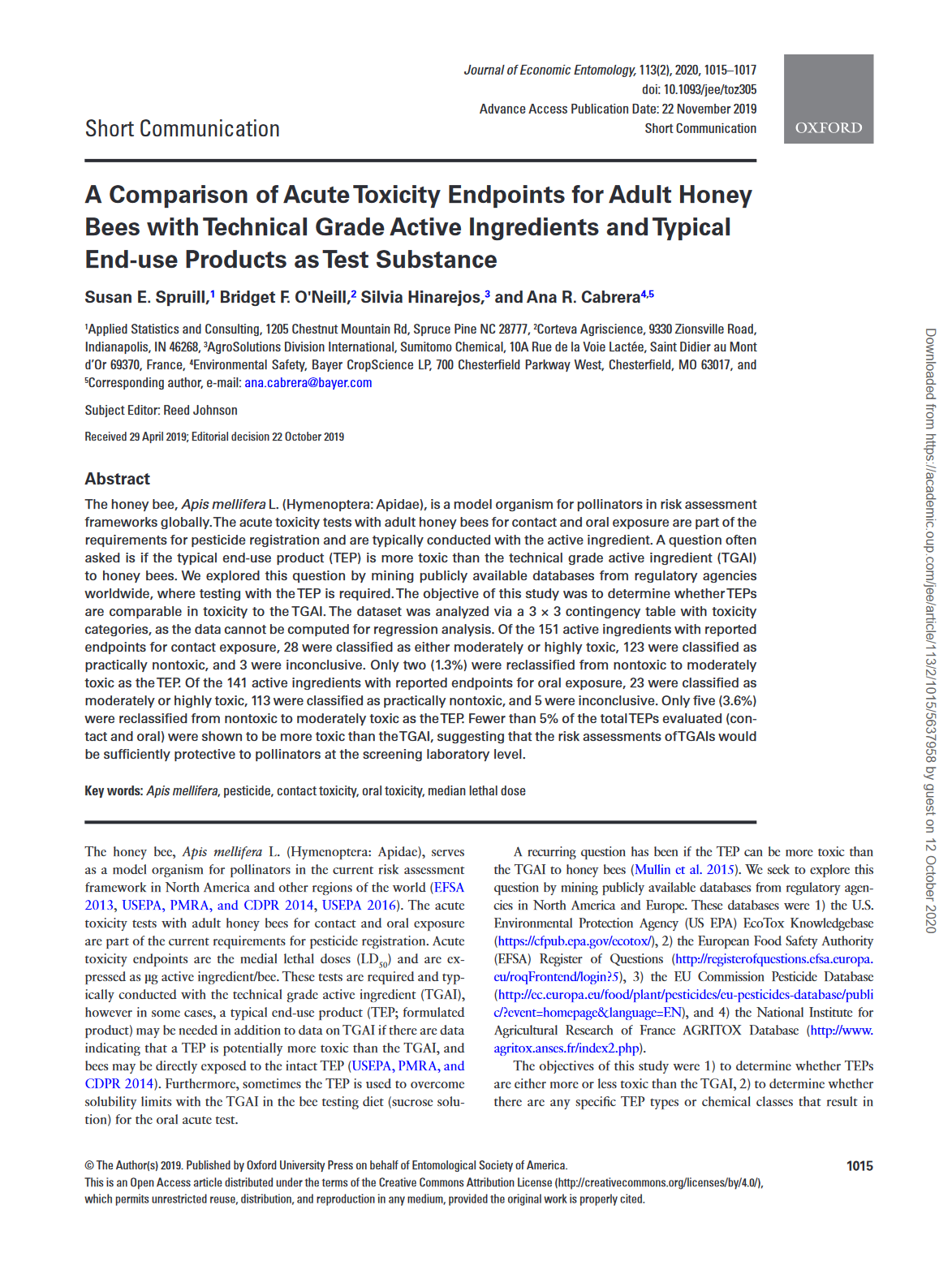
A Comparison of Acute Toxicity Endpoints for Adult Honey Bees with Technical Grade Active Ingredients and Typical End-use Products as Test Substance
In: Journal of Economic Entomology, vol. 113(2), pp. 1015-1017, 2020.
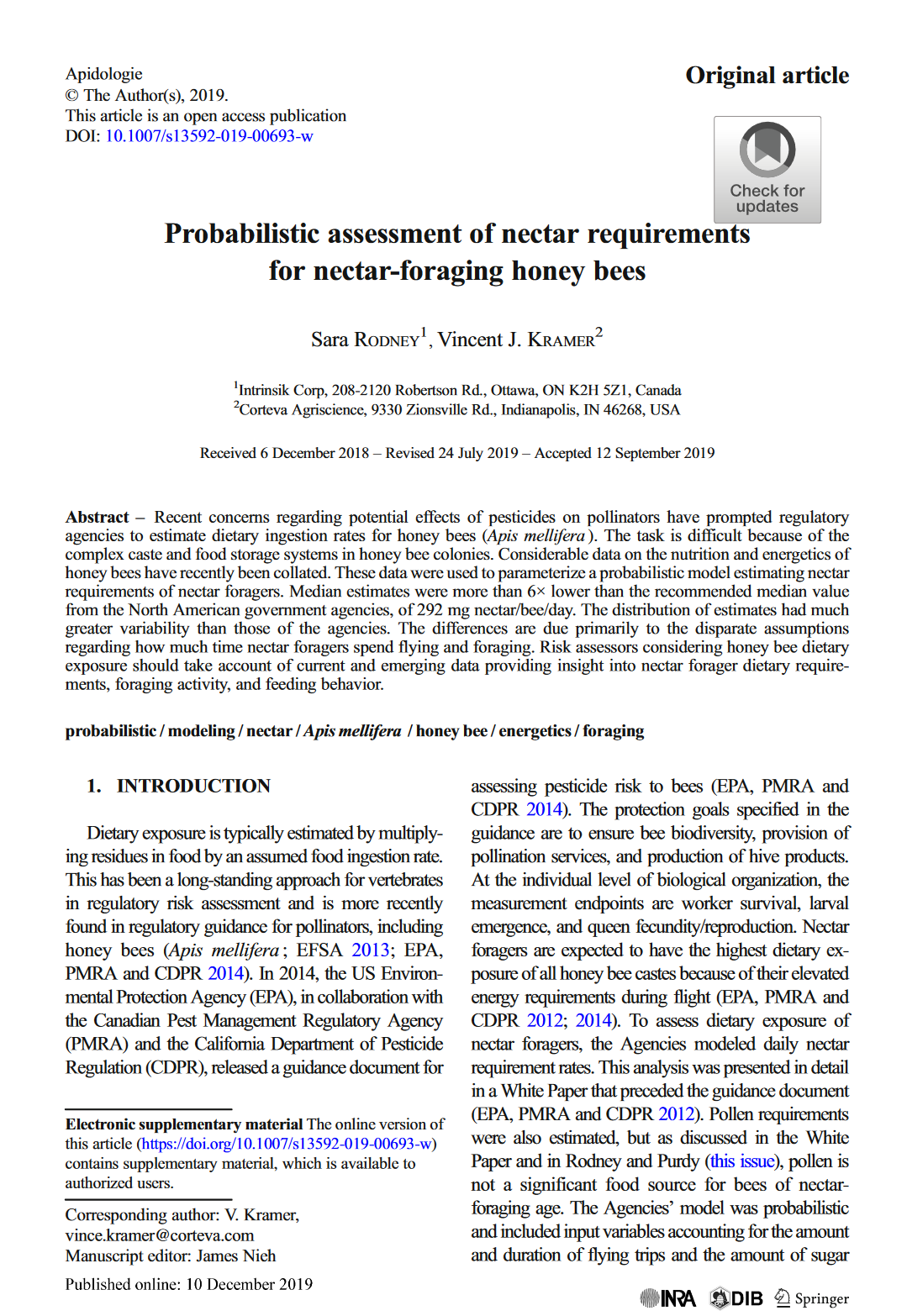
Probabilistic assessment of nectar requirements for nectar-foraging honey bees
In: Apidologie, vol. 51, pp. 180-200, 2020.
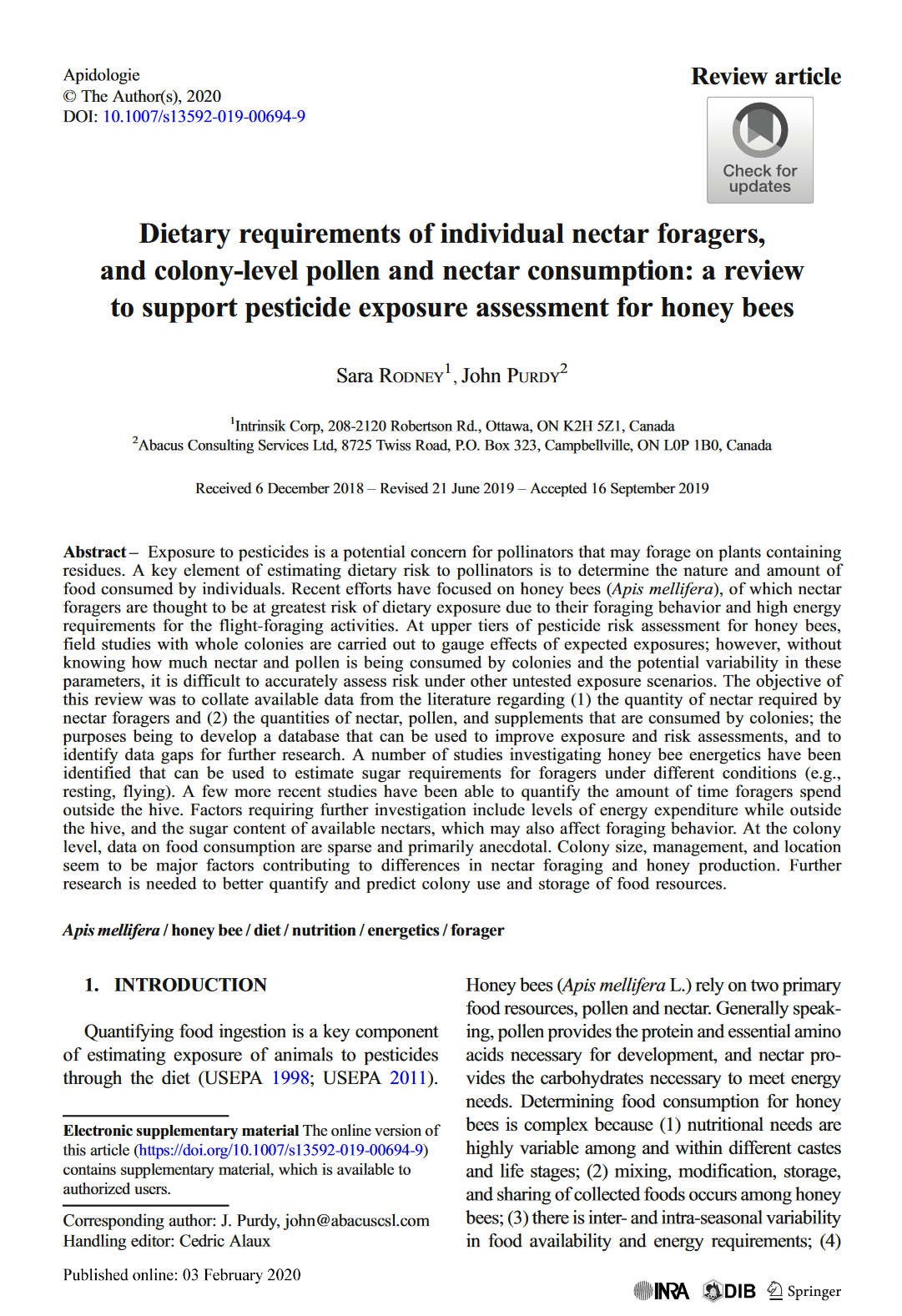
Dietary requirements of individual nectar foragers, and colony-level pollen and nectar consumption: a review to support pesticide exposure assessment for honey bees
In: Apidologie, vol. 51, pp. 163-179, 2020.
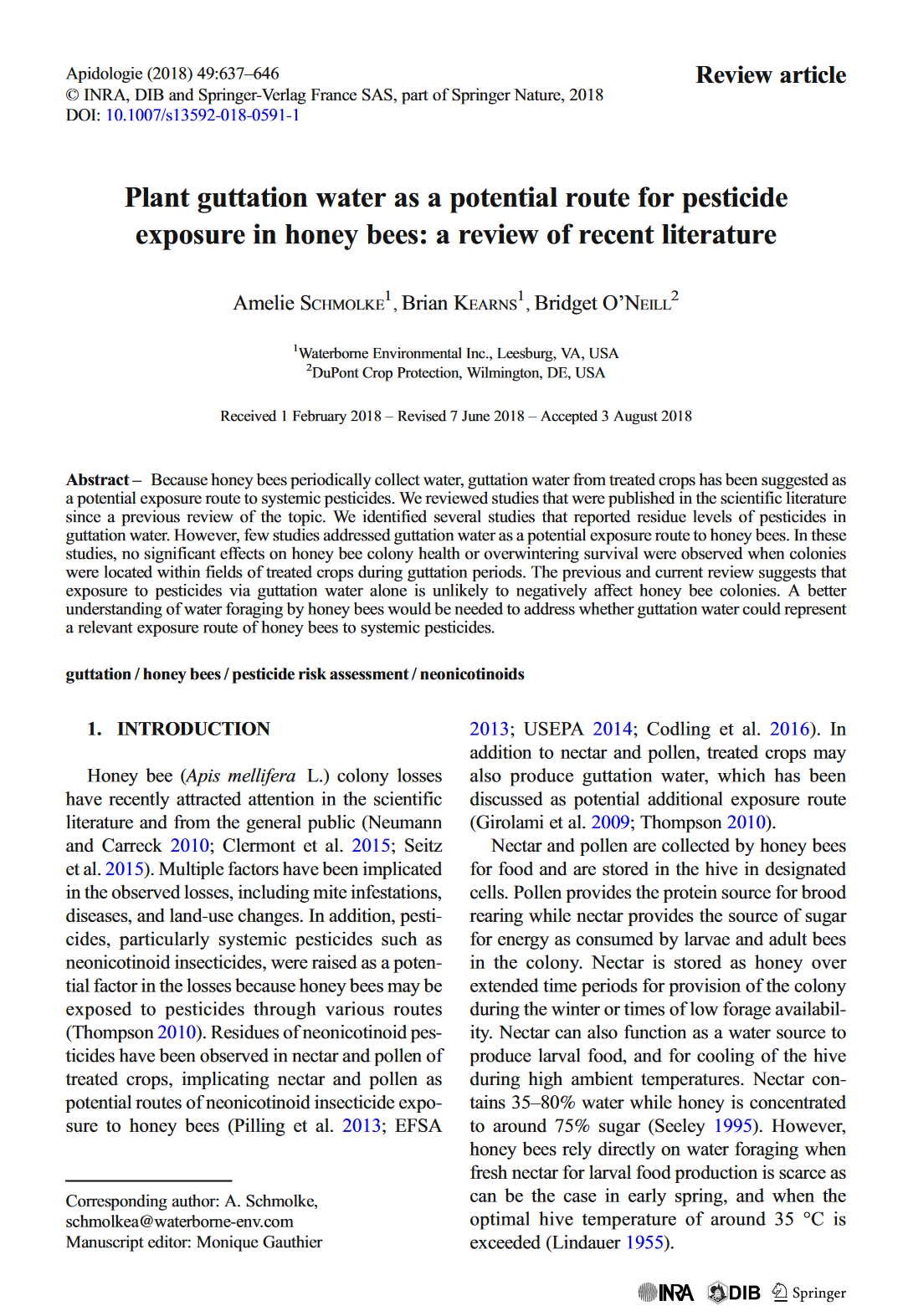
Plant guttation water as a potential route for pesticide exposure in honey bees: a review of recent literature
In: Apidologie, vol. 49, pp. 637–646, 2018.
Some honey bee researchers have raised concerns that current risk assessment processes do not take
into account potential exposure by way of guttation water. Guttation is a process of exudation of xylem
sap on the edges of plant leaves. This process occurs in vascular plants when there is high soil moisture
and the plant then has excess water. Guttation fluid may possibly be used as a water source by honey
bees. There is a potential for this fluid to contain pesticide residues. The PRTF commissioned a review
of recent literature on this topic. Thirteen relevant papers were found.
Stand-alone Publications:
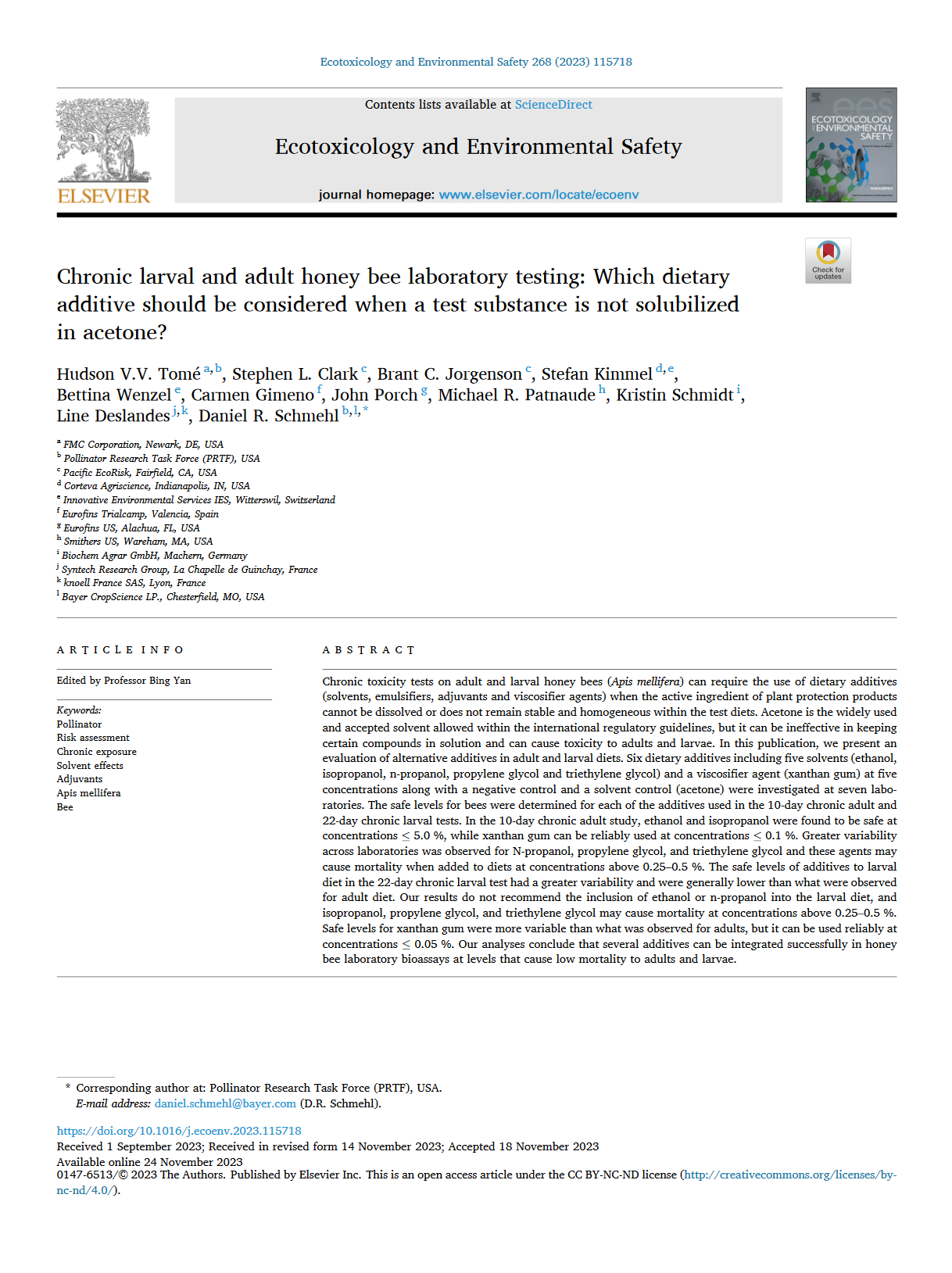
Chronic larval and adult honey bee laboratory testing: Which dietary additive should be considered when a test substance is not solubilized in acetone?
In: Ecotoxicology and Environmental Safety, vol. 268, 2023
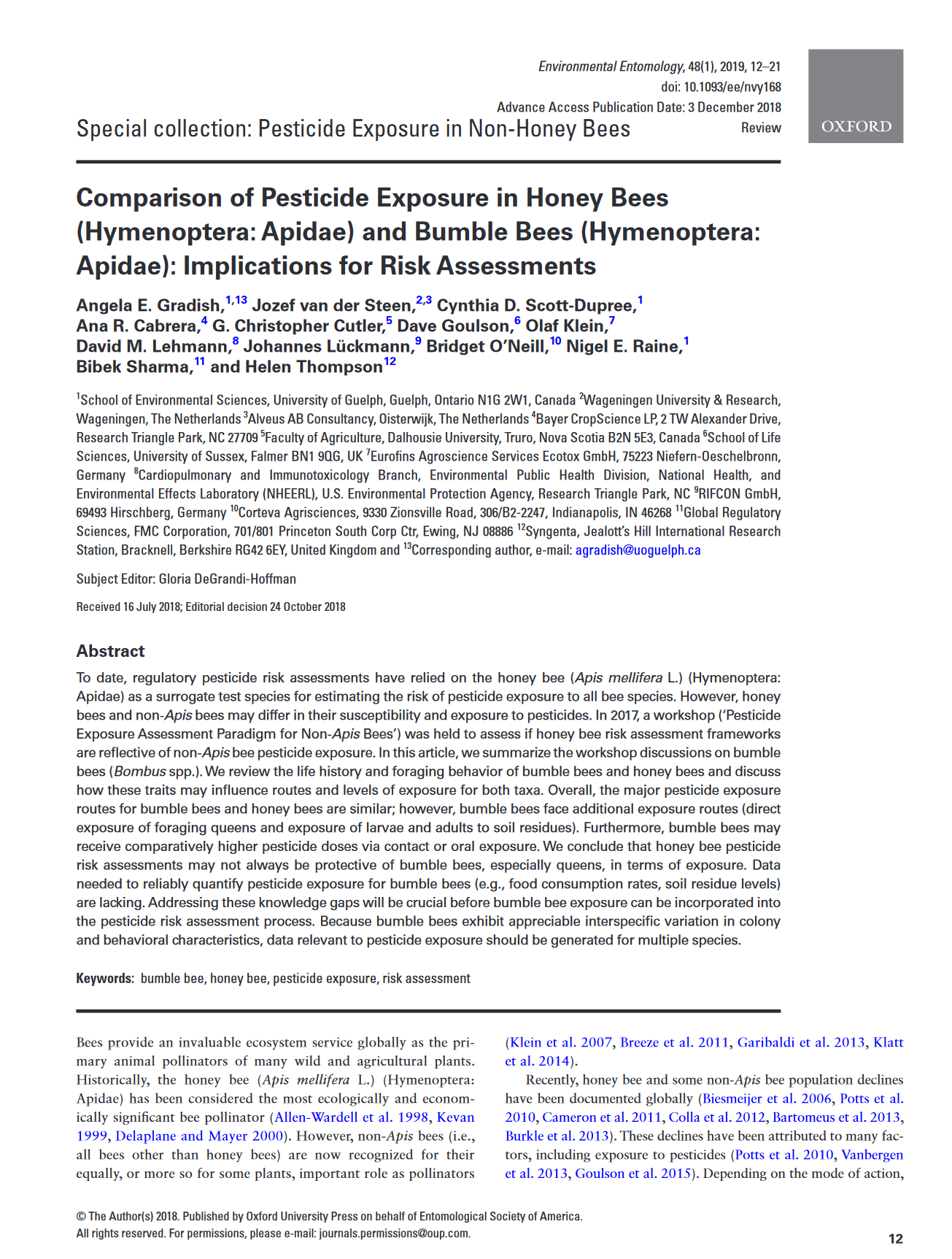
Comparison of Pesticide Exposure in Honey Bees (Hymenoptera: Apidae) and Bumble Bees (Hymenoptera: Apidae): Implications for Risk Assessments
In: Environmental Entomology, vol. 48, pp. 12-21, 2019
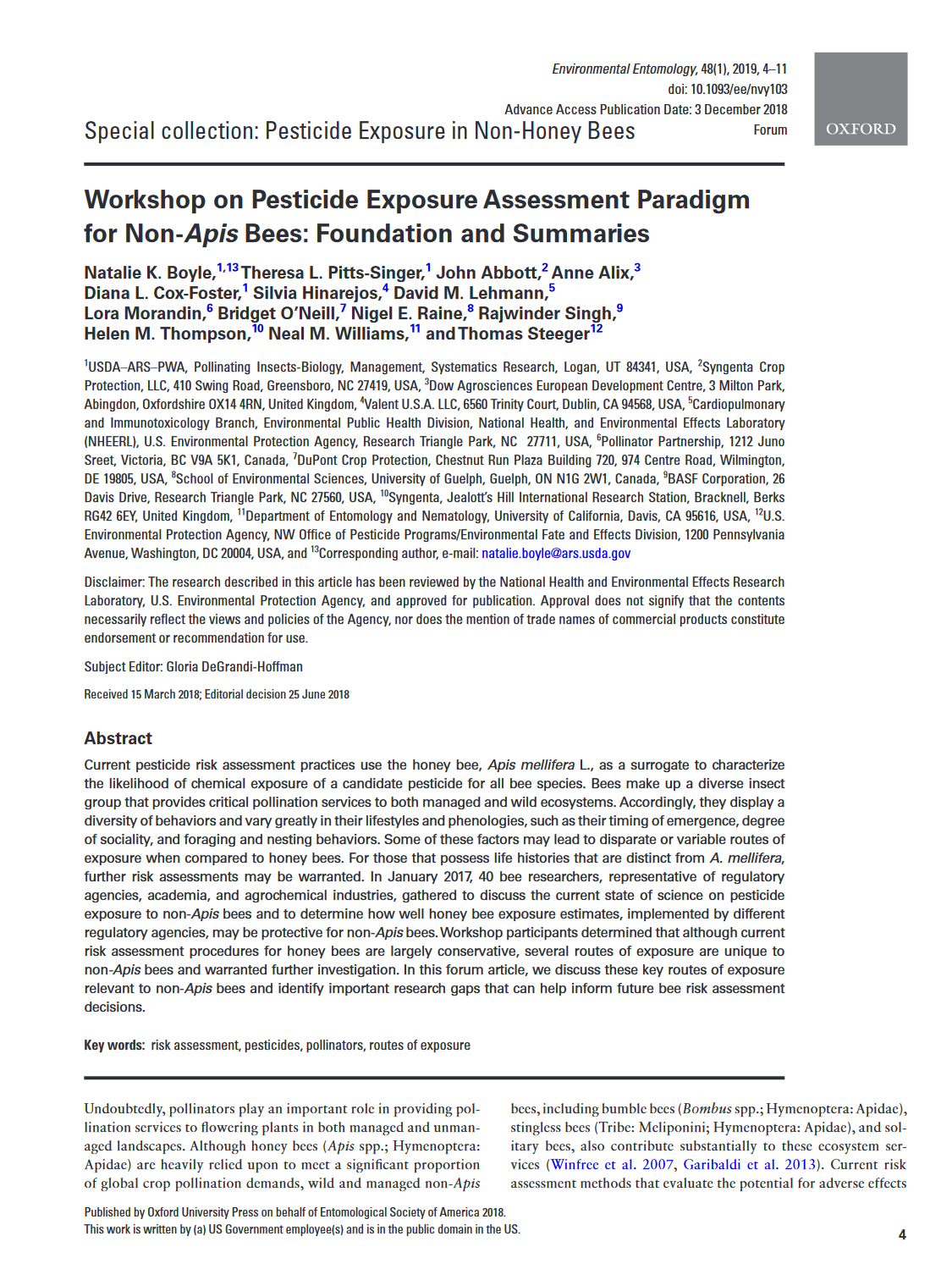
Workshop on Pesticide Exposure Assessment Paradigm for Non-Apis Bees: Foundation and Summaries
In: Environmental Entomology, vol. 48(1), pp. 4-11, 2019
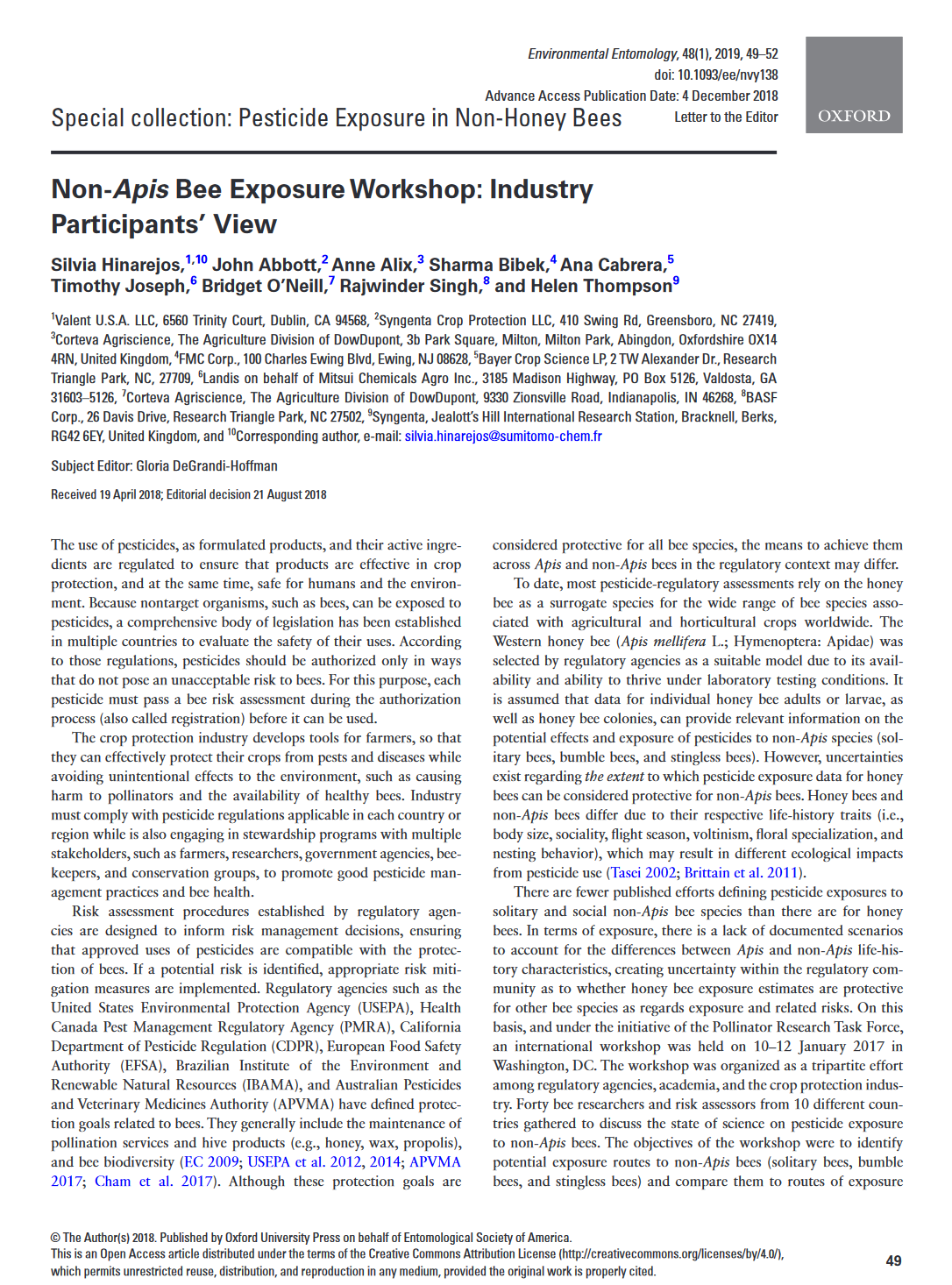
Non-Apis Bee Exposure Workshop: Industry Participants’ View
In: Environmental Entomology, vol. 48(1), pp. 49-52, 2019
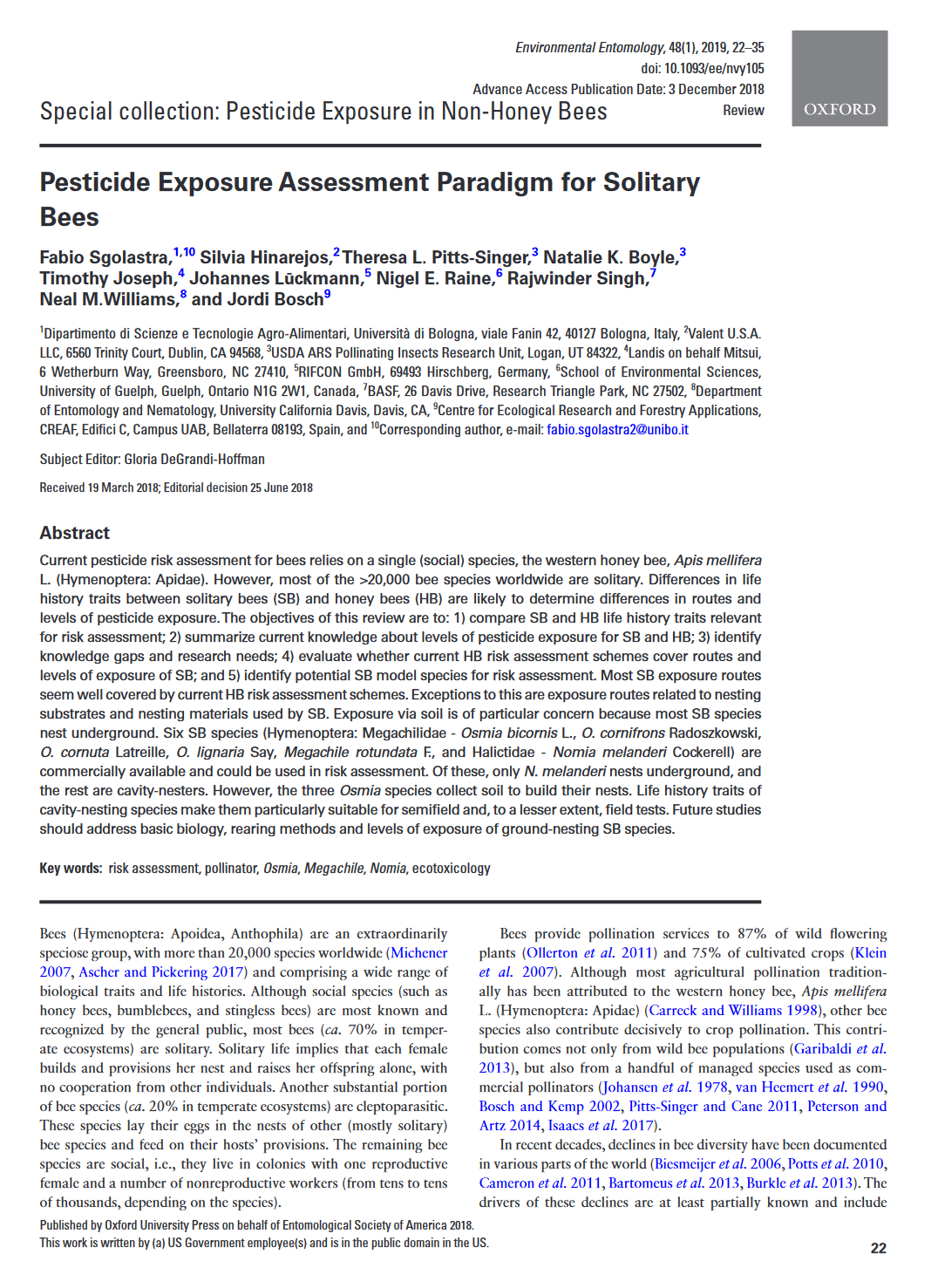
Pesticide Exposure Assessment Paradigm for Solitary Bees
In: Environmental Entomology, vol. 48(1), pp. 22-35, 2019
PRTF Presentations & Publications:
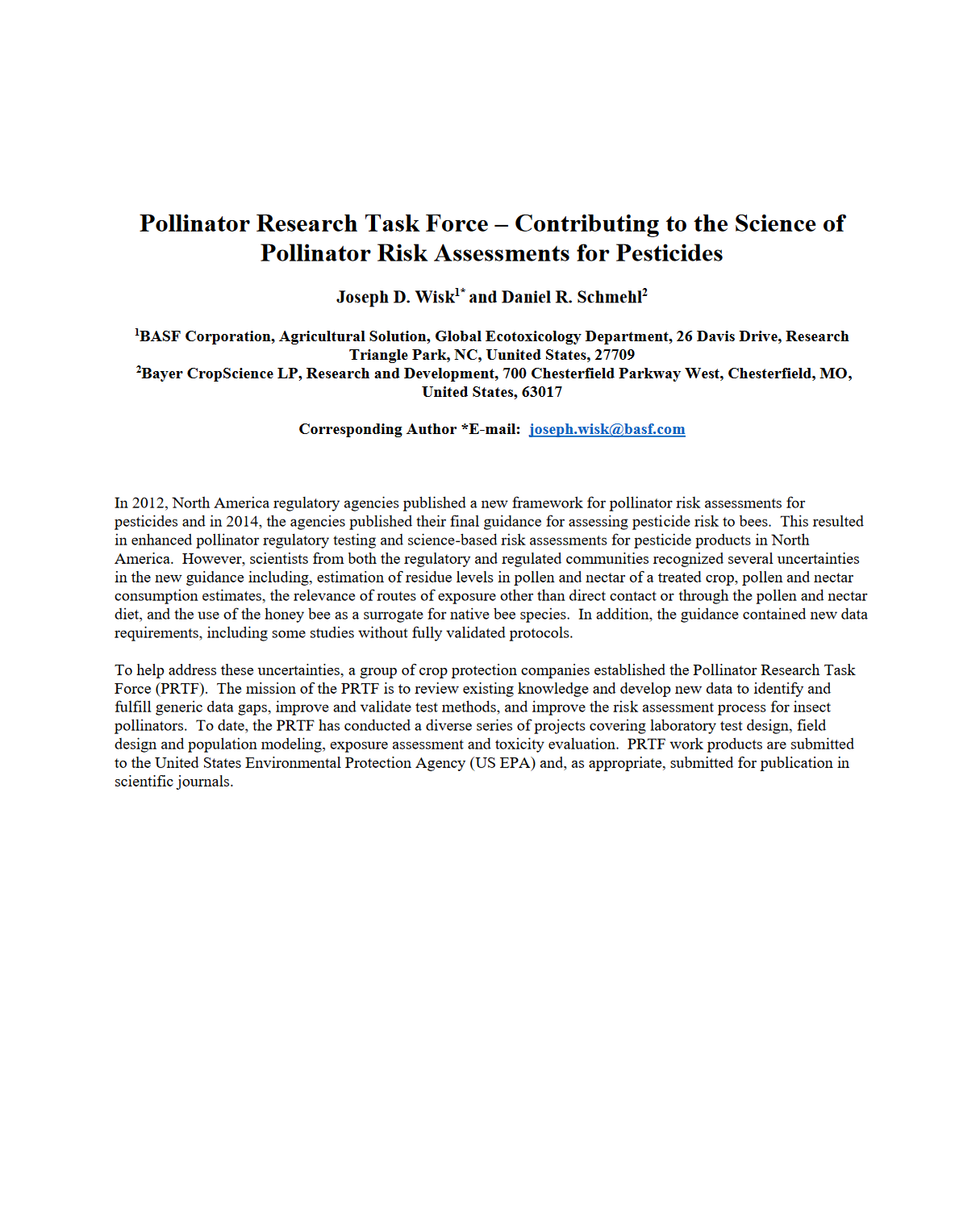
Pollinator Research Task Force – Contributing to the Science of Pollinator Risk Assessments for Pesticides
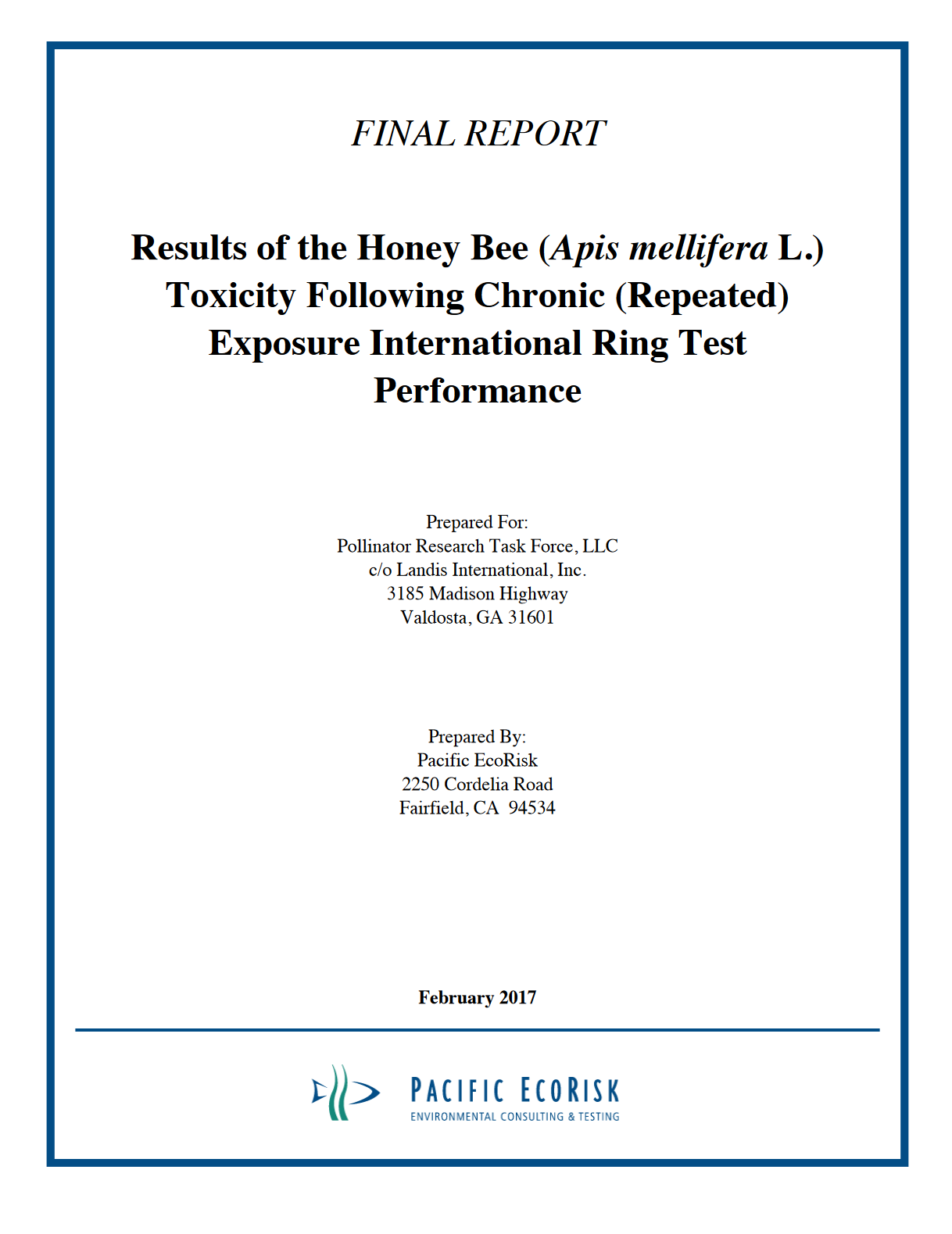
Results of the Honey Bee (Apis mellifera L.) Toxicity Following Chronic (Repeated) Exposure International Ring Test Performance
Improved estimates of exposure to non-Apis bees
Honey bees are important pollinators in both agricultural and natural systems. However, in addition to
the common honey bees from the species Apis mellifera there are many other bees. These bees are
collectively referred to as “non-Apis bees.”
Researchers have raised concerns about the potential risk of pesticide use to non-Apis bees. To help
better understand potential risks, the PRTF helped organize and sponsor a workshop in 2017 to help
answer questions related to:
• Routes of pesticide exposure for Apis vs. non-Apis bees
• Levels of pesticide exposure for Apis vs. non-Apis bees
• Identification of data gaps and how to fill them.
Based on the results of the workshop and subsequent work by workshop subteams, reports and
manuscripts were developed for: bumble bees, solitary bees, and stingless bees.
